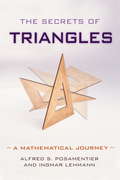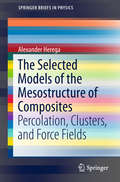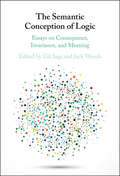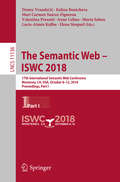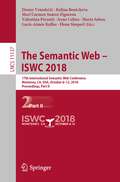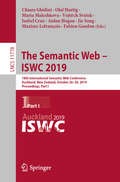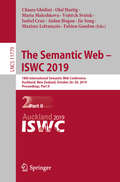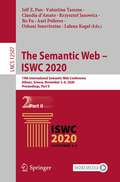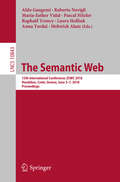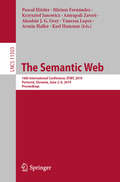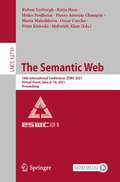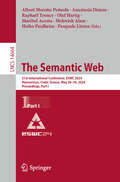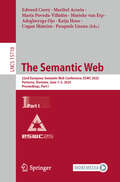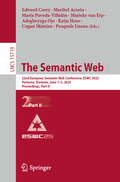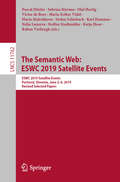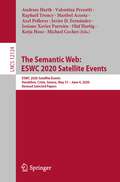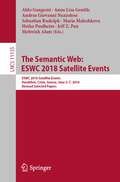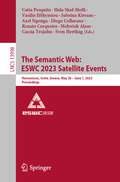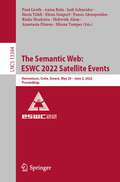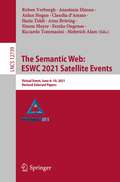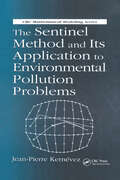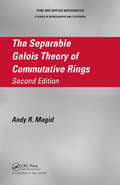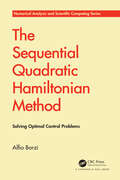- Table View
- List View
The Secrets of Triangles
by Alfred S. PosamentierRequiring no more than a knowledge of high school mathematics and written in clear and accessible language, this book will give all readers a new insight into some of the most enjoyable and fascinating aspects of geometry. Everyone knows what a triangle is, yet very few people appreciate that the common three-sided figure holds many intriguing "secrets." For example, if a circle is inscribed in any random triangle and then three lines are drawn from the three points of tangency to the opposite vertices of the triangle, these lines will always meet at a common point-no matter what the shape of the triangle. This and many more interesting geometrical properties are revealed in this entertaining and illuminating book about geometry. Flying in the face of the common impression that mathematics is usually dry and intimidating, this book proves that this sometimes-daunting, abstract discipline can be both fun and intellectually stimulating. The authors, two veteran math educators, explore the multitude of surprising relationships connected with triangles and show some clever approaches to constructing triangles using a straightedge and a compass. Readers will learn how they can improve their problem-solving skills by performing these triangle constructions. The lines, points, and circles related to triangles harbor countless surprising relationships that are presented here in a very engaging fashion.
The Selected Models of the Mesostructure of Composites: Percolation, Clusters, Force Fields (SpringerBriefs in Physics)
by Alexander HeregaThis book presents the role of mesostructure on the properties of composite materials. A complex percolation model is developed for the material structure containing percolation clusters of phases and interior boundaries. Modeling of technological cracks and the percolation in the Sierpinski carpet are described. The interaction of mesoscopic interior boundaries of the material, including the fractal nature of interior boundaries, the oscillatory nature of it interaction and also the stochastic model of the interior boundaries’ interaction, the genesis, structure, and properties are discussed. One of part of the book introduces the percolation model of the long-range effect which is based on the notion on the multifractal clusters with transforming elements, and the theorem on the field interaction of multifractals is described. In addition small clusters, their characteristic properties and the criterion of stability are presented.
The Semantic Conception of Logic: Essays on Consequence, Invariance, and Meaning
by Gil Sagi Jack WoodsThis collection of new essays presents cutting-edge research on the semantic conception of logic, the invariance criteria of logicality, grammaticality, and logical truth. Contributors explore the history of the semantic tradition, starting with Tarski, and its historical applications, while central criticisms of the tradition, and especially the use of invariance criteria to explain logicality, are revisited by the original participants in that debate. Other essays discuss more recent criticism of the approach, and researchers from mathematics and linguistics weigh in on the role of the semantic tradition in their disciplines. This book will be invaluable to philosophers and logicians alike.
The Semantic Web – ISWC 2018: 17th International Semantic Web Conference, Monterey, CA, USA, October 8–12, 2018, Proceedings, Part I (Lecture Notes in Computer Science #11136)
by Valentina Presutti Elena Simperl Mari Carmen Suárez-Figueroa Marta Sabou Denny Vrandečić Kalina Bontcheva Irene Celino Lucie-Aimée KaffeeThe two-volume set LNCS 11136 and 11137 constitutes the refereed proceedings of the 17th International Semantic Web Conference, ISWC 2018, held in Monterey, USA, in October 2018. The ISWC conference is the premier international forum for the Semantic Web / Linked Data Community. The total of 62 full papers included in this volume was selected from 250 submissions. The conference is organized in three tracks: for the Research Track 39 full papers were selected from 164 submissions. The Resource Track contains 17 full papers, selected from 55 submissions; and the In-Use track features 6 full papers which were selected from 31 submissions to this track.
The Semantic Web – ISWC 2018: 17th International Semantic Web Conference, Monterey, CA, USA, October 8–12, 2018, Proceedings, Part II (Lecture Notes in Computer Science #11137)
by Valentina Presutti Elena Simperl Mari Carmen Suárez-Figueroa Marta Sabou Denny Vrandečić Kalina Bontcheva Irene Celino Lucie-Aimée KaffeeThe two-volume set LNCS 11136 and 11137 constitutes the refereed proceedings of the 17th International Semantic Web Conference, ISWC 2018, held in Monterey, USA, in October 2018. The ISWC conference is the premier international forum for the Semantic Web / Linked Data Community. The total of 62 full papers included in this volume was selected from 250 submissions. The conference is organized in three tracks: for the Research Track 39 full papers were selected from 164 submissions. The Resource Track contains 17 full papers, selected from 55 submissions; and the In-Use track features 6 full papers which were selected from 31 submissions to this track.Paper 'The SPAR Ontologies' is available open access under a Creative Commons Attribution 4.0 International License via link.springer.com.
The Semantic Web – ISWC 2019: 18th International Semantic Web Conference, Auckland, New Zealand, October 26–30, 2019, Proceedings, Part I (Lecture Notes in Computer Science #11778)
by Fabien Gandon Chiara Ghidini Olaf Hartig Maria Maleshkova Isabel Cruz Vojtěch Svátek Aidan Hogan Jie Song Maxime LefrançoisThe two-volume set of LNCS 11778 and 11779 constitutes the refereed proceedings of the 18th International Semantic Web Conference, ISWC 2019, held in Auckland, New Zealand, in October 2019. The ISWC conference is the premier international forum for the Semantic Web / Linked Data Community.The total of 74 full papers included in this volume was selected from 283 submissions. The conference is organized in three tracks: for the Research Track 42 full papers were selected from 194 submissions; the Resource Track contains 21 full papers, selected from 64 submissions; and the In-Use Track features 11 full papers which were selected from 25 submissions to this track.
The Semantic Web – ISWC 2019: 18th International Semantic Web Conference, Auckland, New Zealand, October 26–30, 2019, Proceedings, Part II (Lecture Notes in Computer Science #11779)
by Fabien Gandon Chiara Ghidini Olaf Hartig Maria Maleshkova Isabel Cruz Vojtěch Svátek Aidan Hogan Jie Song Maxime LefrançoisThe two-volume set of LNCS 11778 and 11779 constitutes the refereed proceedings of the 18th International Semantic Web Conference, ISWC 2019, held in Auckland, New Zealand, in October 2019. The ISWC conference is the premier international forum for the Semantic Web / Linked Data Community.The total of 74 full papers included in this volume was selected from 283 submissions. The conference is organized in three tracks: for the Research Track 42 full papers were selected from 194 submissions; the Resource Track contains 21 full papers, selected from 64 submissions; and the In-Use Track features 11 full papers which were selected from 25 submissions to this track.The chapter "The SEPSES knowledge graph: An integrated resource for cybersecurity" is open access under a CC BY 4.0 license at link.springer.com.
The Semantic Web – ISWC 2020: 19th International Semantic Web Conference, Athens, Greece, November 2–6, 2020, Proceedings, Part II (Lecture Notes in Computer Science #12507)
by Bo Fu Valentina Tamma Jeff Z. Pan Claudia D’Amato Krzysztof Janowicz Axel Polleres Oshani Seneviratne Lalana KagalThe two volume set LNCS 12506 and 12507 constitutes the proceedings of the 19th International Semantic Web Conference, ISWC 2020, which was planned to take place in Athens, Greece, during November 2-6, 2020. The conference changed to a virtual format due to the COVID-19 pandemic. The papers included in this volume deal with the latest advances in fundamental research, innovative technology, and applications of the Semantic Web, linked data, knowledge graphs, and knowledge processing on the Web. They were carefully reviewed and selected for inclusion in the proceedings as follows: Part I: Features 38 papers from the research track which were accepted from 170 submissions; Part II: Includes 22 papers from the resources track which were accepted from 71 submissions; and 21 papers in the in-use track, which had a total of 46 submissions.
The Semantic Web: 15th International Conference, ESWC 2018, Heraklion, Crete, Greece, June 3–7, 2018, Proceedings (Lecture Notes in Computer Science #10843)
by Anna Tordai Maria-Esther Vidal Aldo Gangemi Raphaël Troncy Pascal Hitzler Roberto Navigli Laura Hollink Mehwish AlamThis book constitutes the refereed proceedings of the 15th International Semantic Web Conference, ESWC 2018, held in Heraklion, Crete, Greece.The 48 revised full papers presented were carefully reviewed and selected from 179 submissions. The papers cover a large range of topics such as logical modelling and reasoning, natural language processing, databases and data storage and access, machine learning, distributed systems, information retrieval and data mining, social networks, and Web science and Web engineering.
The Semantic Web: 16th International Conference, ESWC 2019, Portorož, Slovenia, June 2–6, 2019, Proceedings (Lecture Notes in Computer Science #11503)
by Armin Haller Pascal Hitzler Miriam Fernández Krzysztof Janowicz Amrapali Zaveri Alasdair J. G. Gray Vanessa Lopez Karl HammarThis book constitutes the refereed proceedings of the 16th International Semantic Web Conference, ESWC 2019, held in Portorož, Slovenia. The 39 revised full papers presented were carefully reviewed and selected from 134 submissions. The papers are organized in three tracks: research track, resources track, and in-use track and deal with the following topical areas: distribution and decentralisation, velocity on the Web, research of research, ontologies and reasoning, linked data, natural language processing and information retrieval, semantic data management and data infrastructures, social and human aspects of the Semantic Web, and, machine learning.
The Semantic Web: 17th International Conference, ESWC 2020, Heraklion, Crete, Greece, May 31–June 4, 2020, Proceedings (Lecture Notes in Computer Science #12123)
by Heiko Paulheim Axel-Cyrille Ngonga Ngomo Anna Lisa Gentile Sabrina Kirrane Andreas Harth Anisa Rula Peter Haase Michael CochezThis book constitutes the refereed proceedings of the 17th International Semantic Web Conference, ESWC 2020, held in Heraklion, Crete, Greece.* The 39 revised full papers presented were carefully reviewed and selected from 166 submissions. The papers were submitted to three tracks: the research track, the resource track and the in-use track. These tracks showcase research and development activities, services and applications, and innovative research outcomes making their way into industry. The research track caters for both long standing and emerging research topics in the form of the following subtracks: ontologies and reasoning; natural language processing and information retrieval; semantic data management and data infrastructures; social and human aspects of the Semantic Web; machine learning; distribution and decentralization; science of science; security, privacy, licensing and trust; knowledge graphs; and integration, services and APIs.*The conference was held virtually due to the COVID-19 pandemic.Chapter ‘Piveau: A Large-scale Oopen Data Management Platform based on Semantic Web Technologies’ is available open access under a Creative Commons Attribution 4.0 International License via link.springer.com.
The Semantic Web: 18th International Conference, ESWC 2021, Virtual Event, June 6–10, 2021, Proceedings (Lecture Notes in Computer Science #12731)
by Ruben Verborgh Oscar Corcho Heiko Paulheim Katja Hose Mehwish Alam Maria Maleshkova Pierre-Antoine Champin Petar RistoskiThis book constitutes the refereed proceedings of the 18th International Semantic Web Conference, ESWC 2021, held virtually in June 2021. The 41 full papers and 2 short papers presented were carefully reviewed and selected from 167 submissions. The papers were submitted to three tracks: the research track, the resource track and the in-use track. These tracks showcase research and development activities, services and applications, and innovative research outcomes making their way into industry. The research track caters to both long-standing and emerging research topics in the form of the following subtracks: ontologies and reasoning; knowledge graphs (understanding, creating, and exploiting); semantic data management, querying and distributed data; data dynamics, quality, and trust; matching, integration, and fusion; NLP and information retrieval; machine learning; science data and scholarly communication; and problems to solve before you die.
The Semantic Web: 21st International Conference, ESWC 2024, Hersonissos, Crete, Greece, May 26–30, 2024, Proceedings, Part I (Lecture Notes in Computer Science #14664)
by Heiko Paulheim Raphaël Troncy Olaf Hartig Mehwish Alam Maribel Acosta Anastasia Dimou Pasquale Lisena Albert Meroño PeñuelaThe two-volume set LNCS 14664 and 14665 constitutes the refereed proceedings of the 21st International Conference on The Semantic Web, ESWC 2024, held in Hersonissos, Crete, Greece, during May 26-30, 2024. The 32 full papers presented were carefully reviewed and selected from 138 submissions. They focus on all aspects of theoretical, analytical, and empirical aspects of the semantic web, semantic technologies, knowledge graphs and semantics on the web in general.
The Semantic Web: 22nd European Semantic Web Conference, ESWC 2025, Portoroz, Slovenia, June 1–5, 2025, Proceedings, Part I (Lecture Notes in Computer Science #15718)
by Edward Curry Adegboyega Ojo Marieke Van Erp Katja Hose Maribel Acosta Pasquale Lisena Maria Poveda-Villalón Cogan ShimizuThis two-volume set LNCS 15718-15719 constitutes the refereed proceedings of the 22nd European Semantic Web Conference, ESWC 2025, held in Portoroz, Slovenia, during June 1–5, 2025.The 45 full papers presented were carefully reviewed and selected from 155 submissions.The ESWC&’s Research track addresses the theoretical, analytical, and empirical aspects of the semantic web, semantic technologies, knowledge graphs and semantics on the Web in general. The In-use track focuses on contributions that reuse and apply state-of-the-art semantic technologies or resources to real-world settings. The resource track deals with resource contributions that are, on the one hand innovative or novel, and on the other hand sharable and reusable (e.g. datasets, knowledge graphs, ontologies, workflows, benchmarks, frameworks), and provide the necessary scaffolding to support the generation of scientific work and advance the state of the art.
The Semantic Web: 22nd European Semantic Web Conference, ESWC 2025, Portoroz, Slovenia, June 1–5, 2025, Proceedings, Part II (Lecture Notes in Computer Science #15719)
by Edward Curry Adegboyega Ojo Marieke Van Erp Katja Hose Maribel Acosta Pasquale Lisena Maria Poveda-Villalón Cogan ShimizuThis two-volume set LNCS 15718-15719 constitutes the refereed proceedings of the 22nd European Semantic Web Conference, ESWC 2025, held in Portoroz, Slovenia, during June 1–5, 2025.The 45 full papers presented were carefully reviewed and selected from 155 submissions.The ESWC&’s Research track addresses the theoretical, analytical, and empirical aspects of the semantic web, semantic technologies, knowledge graphs and semantics on the Web in general. The In-use track focuses on contributions that reuse and apply state-of-the-art semantic technologies or resources to real-world settings. The resource track deals with resource contributions that are, on the one hand innovative or novel, and on the other hand sharable and reusable (e.g. datasets, knowledge graphs, ontologies, workflows, benchmarks, frameworks), and provide the necessary scaffolding to support the generation of scientific work and advance the state of the art.
The Semantic Web: ESWC 2019 Satellite Events, Portorož, Slovenia, June 2–6, 2019, Revised Selected Papers (Lecture Notes in Computer Science #11762)
by Ruben Verborgh Maria-Esther Vidal Stefan Schlobach Pascal Hitzler Olaf Hartig Katja Hose Maria Maleshkova Karl Hammar Sabrina Kirrane Victor De Boer Nelia Lasierra Steffen StadtmüllerThis book constitutes the thoroughly refereed post-conference proceedings of the Satellite Events of the 16th Extended Semantic Web Conference, ESWC 2019, held in Portorož, Slovenia, in June 2019.The volume contains 38 poster and demonstration papers, 2 workshop papers,5 PhD symposium papers, and 3 industry track papers, selected out of a total of 68 submissions. They deal with all areas of semantic web research, semantic technologies on the Web and Linked Data.
The Semantic Web: ESWC 2020 Satellite Events, Heraklion, Crete, Greece, May 31 – June 4, 2020, Revised Selected Papers (Lecture Notes in Computer Science #12124)
by Valentina Presutti Raphaël Troncy Olaf Hartig Katja Hose Maribel Acosta Andreas Harth Michael Cochez Axel Polleres Javier D. Fernández Josiane Xavier ParreiraThis book constitutes the proceedings of the satellite events held at the 17th Extended Semantic Web Conference, ESWC 2020, in May/June 2020. The conference was planned to take place in Heraklion, Crete, Greece, but changed to an online format due to the COVID-19 pandemic. ESWC is a major venue for presenting and discussing the latest scientific results and technology innovations related to the Semantic Web, Linked Data and Knowledge Graphs. The 36 poster and demo papers, 7 PhD symposium papers, and 4 industry track papers, included in this volume were carefully reviewed and selected from 59 submissions to the poster and demo track; 11 submissions to the PhD symposium track, and 5 submissions to the Industry track.
The Semantic Web: Eswc 2018 Satellite Events, Heraklion, Crete, Greece, June 3-7, 2018, Revised Selected Papers (Lecture Notes in Computer Science #11155)
by Heiko Paulheim Sebastian Rudolph Aldo Gangemi Mehwish Alam Anna Lisa Gentile Andrea Giovanni Nuzzolese Maria Maleshkova Jeff Z PanThis book constitutes the thoroughly refereed post-conference proceedings of the Satellite Events of the 15th Extended Semantic Web Conference, ESWC 2018, held in Heraklion, Crete, Greece, in June 2018.The volume contains 41 poster and demonstration papers, 11 invited workshop papers, and 9 full papers, selected out of a total of 70 submissions. They deal with all areas of semantic web research, semantic technologies on the Web and Linked Data.
The Semantic Web: Hersonissos, Crete, Greece, May 28 - June 1, 2023, Proceedings (Lecture Notes in Computer Science #13998)
by Mehwish Alam Sabrina Kirrane Vasilis Efthymiou Catia Pesquita Hala Skaf-Molli Renato Cerqueira Sven Hertling Axel Ngonga Diego Collarana Cassia TrojahnThis book constitutes the post-conference proceedings of the satellite events held at the 20th Extended Semantic Web Conference, ESWC 2023, held in Hersonissos, Greece, during May 28—June 1, 2023.The 50 full papers included in this book were carefully reviewed and selected from 109 submissions. They were organized in sections as follows: Posters and Demos, Industry, and PhD Symposium.
The Semantic Web: Hersonissos, Crete, Greece, May 29 – June 2, 2022, Proceedings (Lecture Notes in Computer Science #13384)
by Paul Groth Elena Simperl Rinke Hoekstra Mehwish Alam Anisa Rula Panos Alexopoulos Anastasia Dimou Ilaria Tiddi Jodi Schneider Minna TamperThis book constitutes the proceedings of the satellite events held at the 19th Extended Semantic Web Conference, ESWC 2022, during May—June in Hersonissos, Greece, 2022. The included satellite events are: the poster and demo session; the PhD symposium; industry track; project networking; workshops and tutorials. During ESWC 2022, the following ten workshops took place:10th Linked Data in Architecture and Construction Workshop (LDAC 2022); 5th International Workshop on Geospatial Linked Data (GeoLD 2022); 5th Workshop on Semantic Web solutions for large-scale biomedical data analytics (SeMWeBMeDA 2022); 7th Natural Language Interfaces for the Web of Data (NLIWOD+QALD 2022); International Workshop on Knowledge Graph Generation from Text (Text2KG 2022); 3rd International Workshop on Deep Learning meets Ontologies and Natural Language Processing (DeepOntoNLP 2022); 1st Workshop on Modular Knowledge (ModularK 2022); Third International Workshop On Knowledge Graph Construction (KGCW 2022); Third International Workshop On Semantic Digital Twins (SeDIT 2022); and the 1st International Workshop on Semantic Industrial Information Modelling (SemIIM 2022).
The Semantic Web: Virtual Event, June 6–10, 2021, Revised Selected Papers (Lecture Notes in Computer Science #12739)
by Ruben Verborgh Mehwish Alam Simon Maier Claudia D’Amato Aidan Hogan Anastasia Dimou Ilaria Tiddi Arne Bröring Femke Ongenae Riccardo TommasiniThis book constitutes the proceedings of the satellite events held at the 18th Extended Semantic Web Conference, ESWC 2021, in June 2021. The conference was held online, due to the COVID-19 pandemic.During ESWC 2021, the following six workshops took place: 1) the Second International Workshop on Deep Learning meets Ontologies and Natural Language Processing (DeepOntoNLP 2021) 2) the Second International Workshop on Semantic Digital Twins (SeDiT 2021) 3) the Second International Workshop on Knowledge Graph Construction (KGC 2021) 5) the 6th International Workshop on eXplainable SENTIment Mining and EmotioN deTection (X-SENTIMENT 2021) 6) the 4th International Workshop on Geospatial Linked Data (GeoLD 2021).
The Sentinel Method and Its Application to Environmental Pollution Problems
by Jean-Pierre KernévezMany environmental problems contain incomplete data in the initial or boundary conditions. How do we solve problems for which some of the initial and/or boundary conditions are unknown? Using a new technique, the sentinel method, this book answers these questions and others as they pertain to inverse problems in environmental pollution, such as pollution of underground and surface waters, thermal pollution, and air pollution.
The Separable Galois Theory of Commutative Rings (Chapman & Hall/CRC Pure and Applied Mathematics)
by Andy R. MagidThe Separable Galois Theory of Commutative Rings, Second Edition provides a complete and self-contained account of the Galois theory of commutative rings from the viewpoint of categorical classification theorems and using solely the techniques of commutative algebra. Along with updating nearly every result and explanation, this edition contains a n
The Sequential Quadratic Hamiltonian Method: Solving Optimal Control Problems (Chapman & Hall/CRC Numerical Analysis and Scientific Computing Series)
by Alfio BorzìThe sequential quadratic hamiltonian (SQH) method is a novel numerical optimization procedure for solving optimal control problems governed by differential models. It is based on the characterisation of optimal controls in the framework of the Pontryagin maximum principle (PMP).The SQH method is a powerful computational methodology that is capable of development in many directions. The Sequential Quadratic Hamiltonian Method: Solving Optimal Control Problems discusses its analysis and use in solving nonsmooth ODE control problems, relaxed ODE control problems, stochastic control problems, mixed-integer control problems, PDE control problems, inverse PDE problems, differential Nash game problems, and problems related to residual neural networks. This book may serve as a textbook for undergraduate and graduate students, and as an introduction for researchers in sciences and engineering who intend to further develop the SQH method or wish to use it as a numerical tool for solving challenging optimal control problems and for investigating the Pontryagin maximum principle on new optimisation problems. Features Provides insight into mathematical and computational issues concerning optimal control problems, while discussing many differential models of interest in different disciplines. Suitable for undergraduate and graduate students and as an introduction for researchers in sciences and engineering. Accompanied by codes which allow the reader to apply the SQH method to solve many different optimal control and optimisation problems.
The Seven Pillars of Statistical Wisdom
by Stephen M. StiglerWhat gives statistics its unity as a science? Stephen Stigler sets forth the seven foundational ideas of statistics--a scientific discipline related to but distinct from mathematics and computer science and one which often seems counterintuitive. His original account will fascinate the interested layperson and engage the professional statistician.
